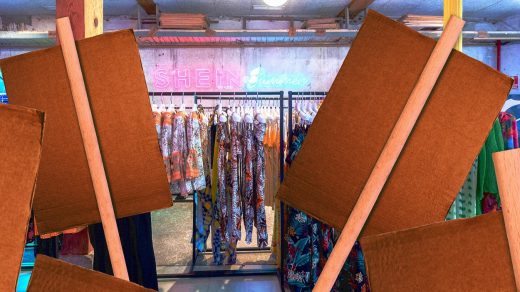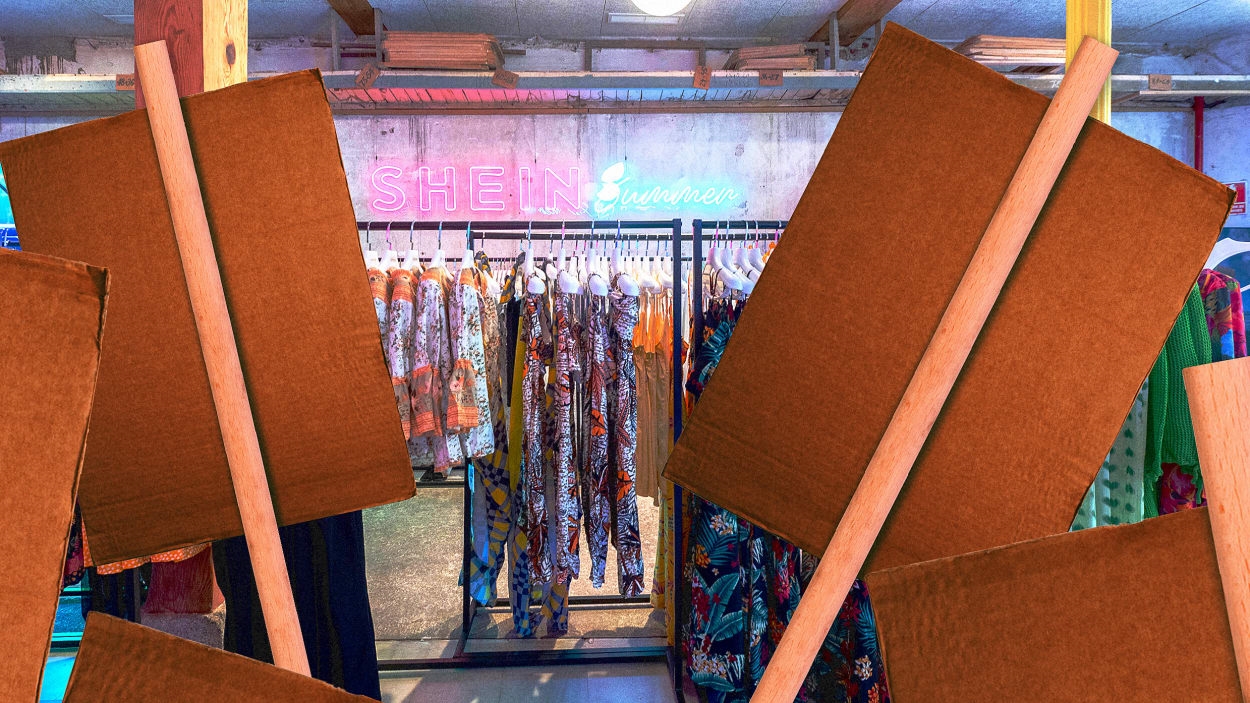ThredUp picks a fight with fast fashion giant Shein
Shein—a Chinese fast-fashion retailer valued at $100 billion—has been called out by the fashion media for perpetuating wasteful overconsumption. Now, ThredUp is entering the fray. The Oakland-based consignment site is sending push notifications to its Bay Area customers, asking them to boycott Shein’s pop-up shop in San Francisco this weekend. It’s rare for a company in the fashion industry to take such a direct jab at another.
“This is definitely a first for ThredUp,” says Erin Wallace, ThredUp’s VP of integrated marketing. “It’s an indication that we think Shein is a real problem.”
View this post on Instagram
The Chinese retailer first launched in 2008 but grew at an alarming pace over the last five years when it expanded into the U.S. market. Its revenues have spiked from $2 billion in 2018 to $15.7 billion in 2021, and it is now valued at $100 billion, which is more than the combined value of fast-fashion pioneers H&M and Zara. In May, Shein overtook Amazon as the top shopping app on the U.S. app stores.
Shein’s business model involves pumping out more low-quality, trendy clothes than its fast-fashion rivals partly because it uses sweatshops. Fashion analytics company Edited found that between January and April of this year, Shein had sold 314,877 new styles, far eclipsing H&M’s 4,414 styles and Zara’s 6,849 styles. Shein has also mastered the art of marketing on social media, capturing the Gen Z market. It is evident in what’s become known as “Shein hauls,” where influencers model dozens of Shein outfits at a time on TikTok and Instagram.(Shein did not respond to our request for comment.)
This incredible churn is devastating for the planet. It requires enormous resources to manufacture and ship so many clothes around the world. And by selling most items at $15 or less, consumers are encouraged to think of them as disposable. “[ThredUp’s] goal is to create a future in which we are reusing more clothes than we are producing,” Wallace says. “When you have players like Shein, that goal seems farther and farther away. It is encouraging overconsumption and disposable fashion on a whole other scale.” To say nothing of the sweatshop element.
Shein has been doing pop-up shops around the U.S. for the last few years, but Wallace says that ThredUp decided to act when Shein announced its pop-up at the Embarcadero Center. “This is our home turf,” she says. “We decided that it was time for us to say something.”
ThredUp wants to position itself as a more sustainable alternative to fast fashion. The company receives millions of used clothes daily from consumers and has built vast processing facilities that sort these goods before putting them online for resale. ThredUp prices these products inexpensively, so they’re competitive with brands like Shein. It makes pennies on each used outfit sold, but because it sells hundreds of millions of them a year, it’s able to generate annual revenues of $251.8 million. ThredUp argues that its model has a smaller environmental footprint than fast fashion because reusing clothes avoids using the water, natural resources, and carbon emissions required to produce a new garment. (It does still require emissions to ship the clothes back and forth across the country.)
In theory, ThredUp could benefit from Shein’s constant churn of clothes because consumers could resell them on the site, generating more revenue. And indeed, ThredUp does sell Shein clothes on its website. “We are a reflection of what is on the market,” Wallace says. “Our mission is to keep clothes out of landfills.”
Still, ThredUp believed it was worth taking a stand again Shein—and it’s a clever marketing play as well. In addition to urging customers to boycott the Shein event, ThredUp is offering new customers a 40% discount and free shipping on their first purchase. “The only thing that gives us pause is not wanting to make any consumer feel bad about their shopping choices,” she says. “We saw an opportunity to start a conversation and provide resources for people who want to learn more.”
Fast Company , Read Full Story
(32)



